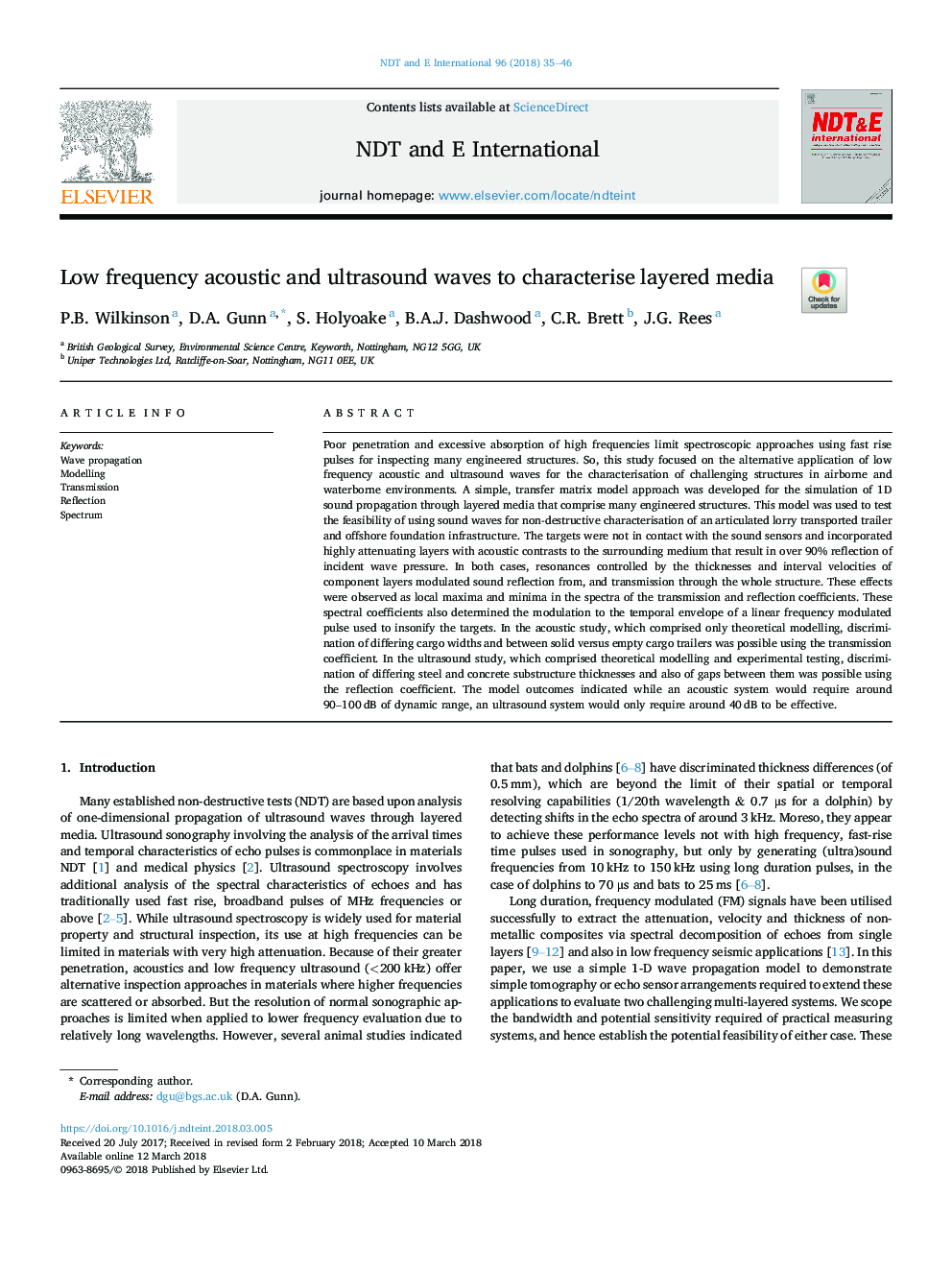| کد مقاله | کد نشریه | سال انتشار | مقاله انگلیسی | نسخه تمام متن |
|---|---|---|---|---|
| 6758261 | 1431265 | 2018 | 12 صفحه PDF | دانلود رایگان |
عنوان انگلیسی مقاله ISI
Low frequency acoustic and ultrasound waves to characterise layered media
ترجمه فارسی عنوان
امواج صوتی و التراسونیک پایین برای توصیف رسانه های لایه ای
دانلود مقاله + سفارش ترجمه
دانلود مقاله ISI انگلیسی
رایگان برای ایرانیان
کلمات کلیدی
پخش امواج، مدل سازی، انتقال، بازتاب، طیف
موضوعات مرتبط
مهندسی و علوم پایه
سایر رشته های مهندسی
مهندسی عمران و سازه
چکیده انگلیسی
Poor penetration and excessive absorption of high frequencies limit spectroscopic approaches using fast rise pulses for inspecting many engineered structures. So, this study focused on the alternative application of low frequency acoustic and ultrasound waves for the characterisation of challenging structures in airborne and waterborne environments. A simple, transfer matrix model approach was developed for the simulation of 1D sound propagation through layered media that comprise many engineered structures. This model was used to test the feasibility of using sound waves for non-destructive characterisation of an articulated lorry transported trailer and offshore foundation infrastructure. The targets were not in contact with the sound sensors and incorporated highly attenuating layers with acoustic contrasts to the surrounding medium that result in over 90% reflection of incident wave pressure. In both cases, resonances controlled by the thicknesses and interval velocities of component layers modulated sound reflection from, and transmission through the whole structure. These effects were observed as local maxima and minima in the spectra of the transmission and reflection coefficients. These spectral coefficients also determined the modulation to the temporal envelope of a linear frequency modulated pulse used to insonify the targets. In the acoustic study, which comprised only theoretical modelling, discrimination of differing cargo widths and between solid versus empty cargo trailers was possible using the transmission coefficient. In the ultrasound study, which comprised theoretical modelling and experimental testing, discrimination of differing steel and concrete substructure thicknesses and also of gaps between them was possible using the reflection coefficient. The model outcomes indicated while an acoustic system would require around 90-100â¯dB of dynamic range, an ultrasound system would only require around 40â¯dB to be effective.
ناشر
Database: Elsevier - ScienceDirect (ساینس دایرکت)
Journal: NDT & E International - Volume 96, June 2018, Pages 35-46
Journal: NDT & E International - Volume 96, June 2018, Pages 35-46
نویسندگان
P.B. Wilkinson, D.A. Gunn, S. Holyoake, B.A.J. Dashwood, C.R. Brett, J.G. Rees,
